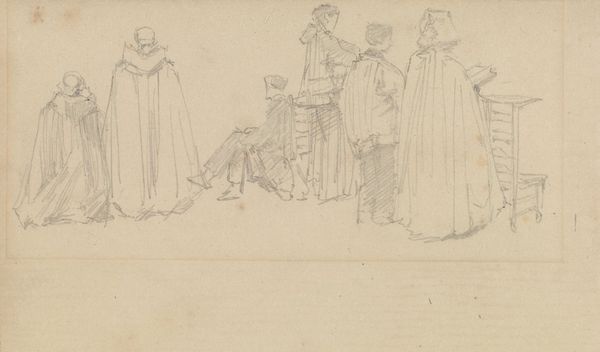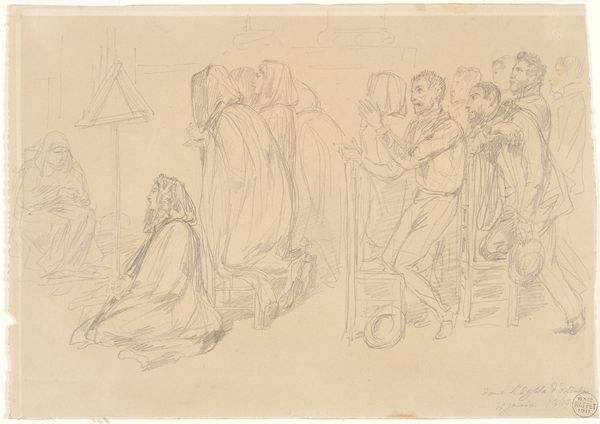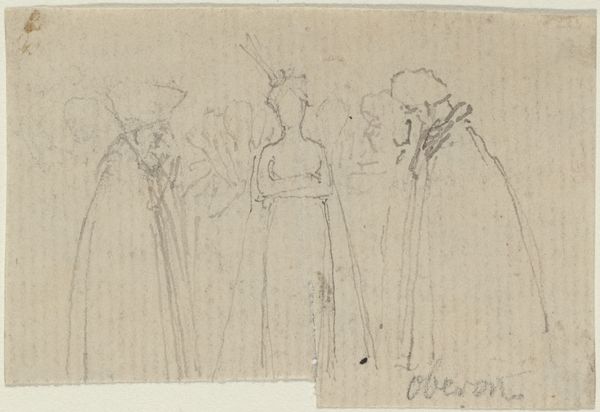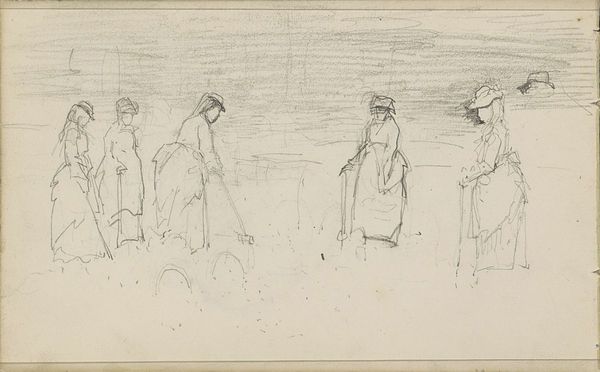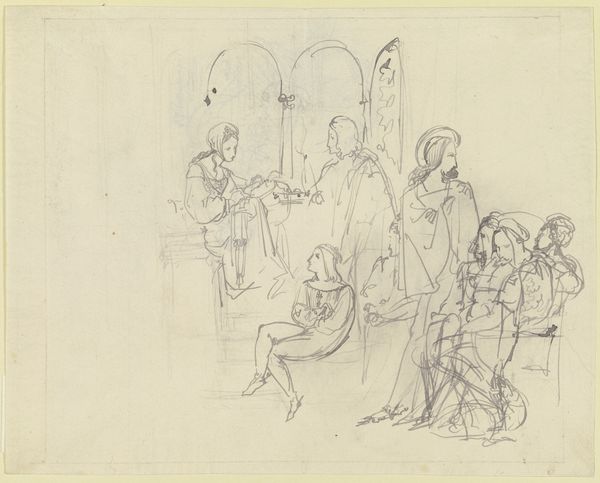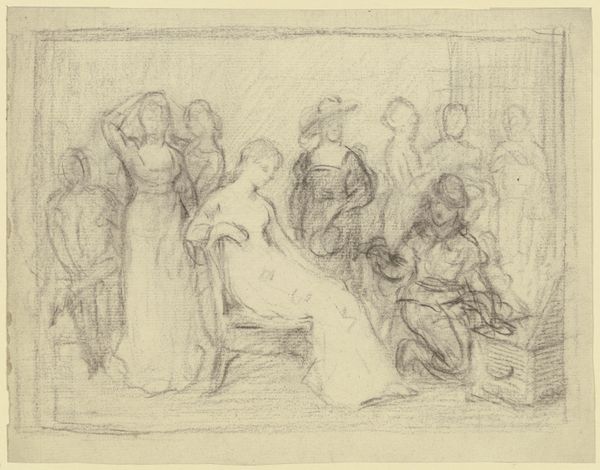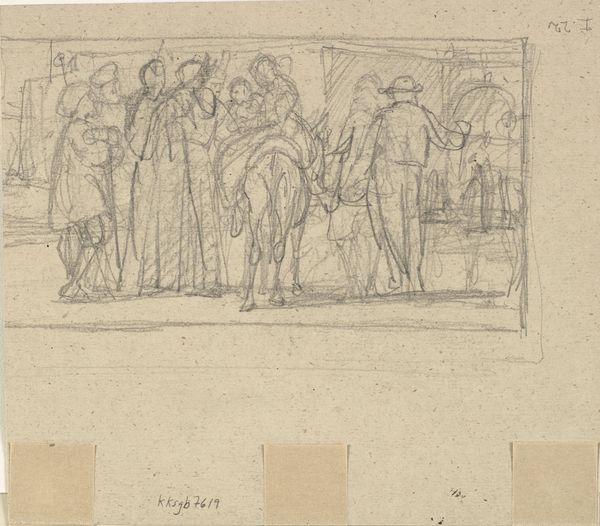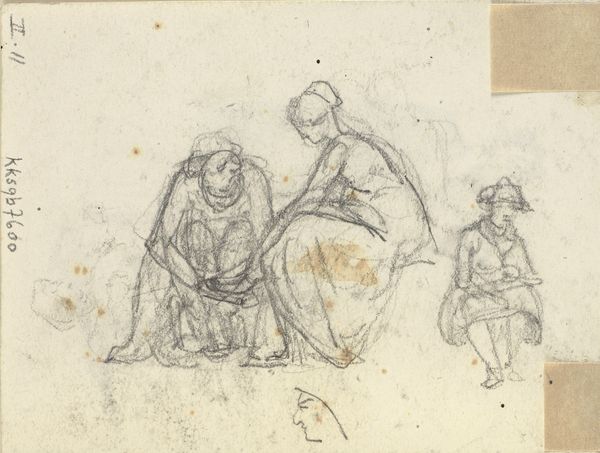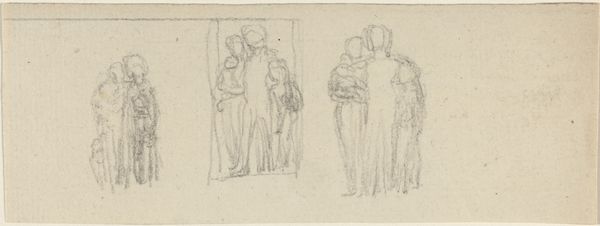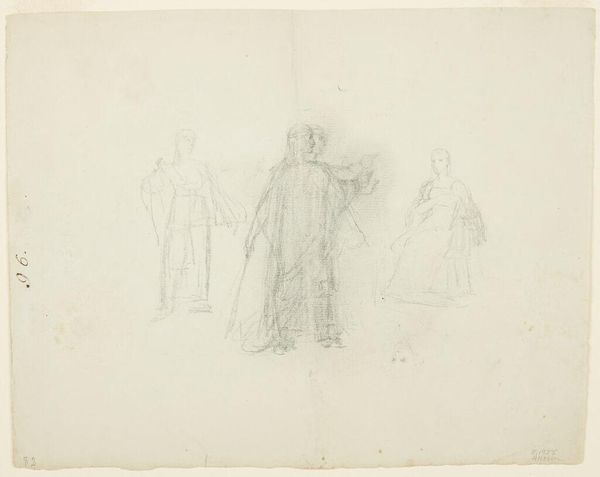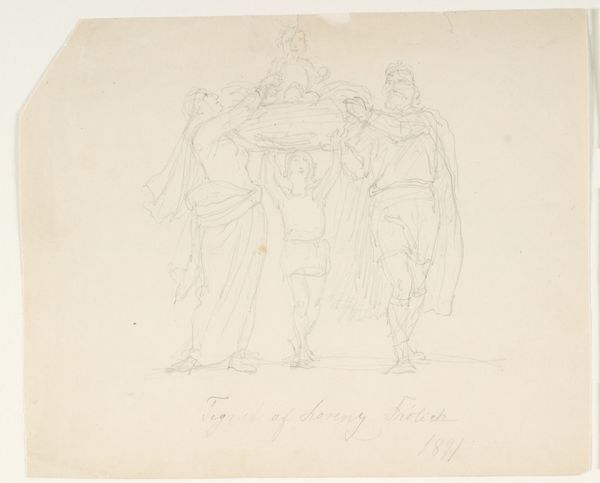
Copyright: Public Domain
Curator: This is Wilhelm Busch's pencil drawing, "Rokokokavalier mit zwei Damen in Ruckenansicht," created around 1873 to 1874. It's currently held at the Stadel Museum. Editor: My first impression is a sketch that is understated, focusing on observing class distinctions and their fashions. Curator: Absolutely. Busch, while known for his humorous illustrated stories, was deeply engaged with the aesthetics of Romanticism. This drawing reflects that preoccupation, but through a critical lens, wouldn't you agree? Note how the artist positions these figures from the back, diminishing their individual identities to turn them into symbols of rococo affectation. Editor: Exactly, and the medium itself is important: the immediacy of pencil allows Busch to capture a fleeting moment of social observation. The sketch feels raw, almost journalistic in its recording of attire, of surface, of how people choose to display wealth and power, it brings into relief that the actual manufacturing and means of labor is all hidden. Curator: The intentional ambiguity certainly prompts questions about performance of identity, especially when the figures are framed against an indistinct scene. Who were these women, and what about their placement creates a power dynamic with the male figure in the center? It all boils down to what social capital that look offers those of different classes in a period of shifting socio-economic orders. Editor: And the act of drawing itself – a readily accessible, relatively inexpensive process– demystifies artistic production, turning it into a kind of social commentary, even. It questions how the means of reproduction itself creates and reifies social distinction. The very act becomes a part of the meaning of wealth creation on display. Curator: It certainly feels more cutting and more insightful when we view it through this modern lens, which can offer interesting comparisons to work dealing with issues of race, class and identity, and which have a completely different set of material, as in a sculpture made from iron ore from Brazil as a response to its socio-political legacy of iron consumption in the EU for instance. Editor: That's right; seeing Busch's social dynamics on display here does shed light on all those artistic decisions that reflect and reinforce our social structure today, whatever the chosen material. Curator: Well, viewing it from that material culture and considering the gender politics certainly highlights how lasting some of these superficial structures are!
Comments
No comments
Be the first to comment and join the conversation on the ultimate creative platform.
